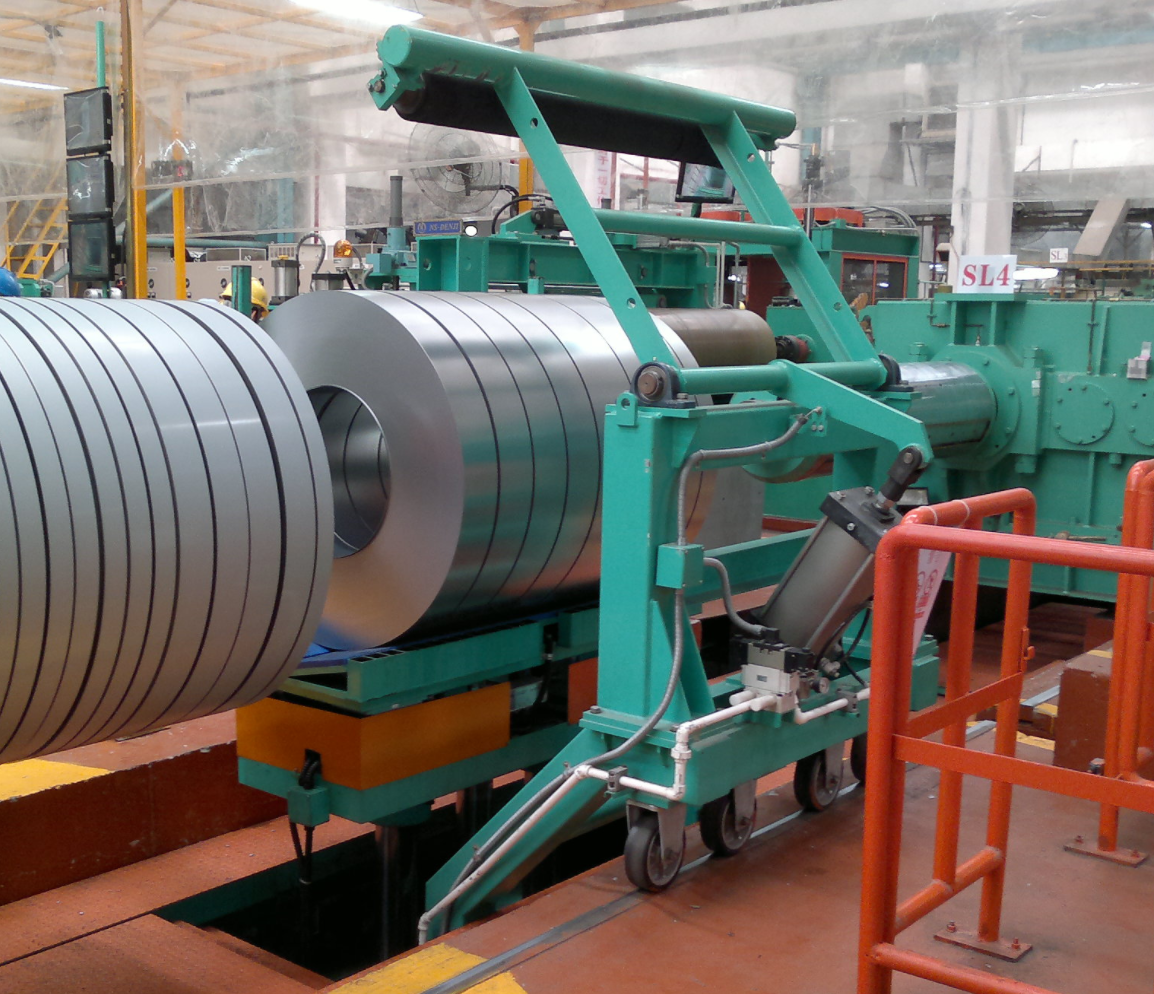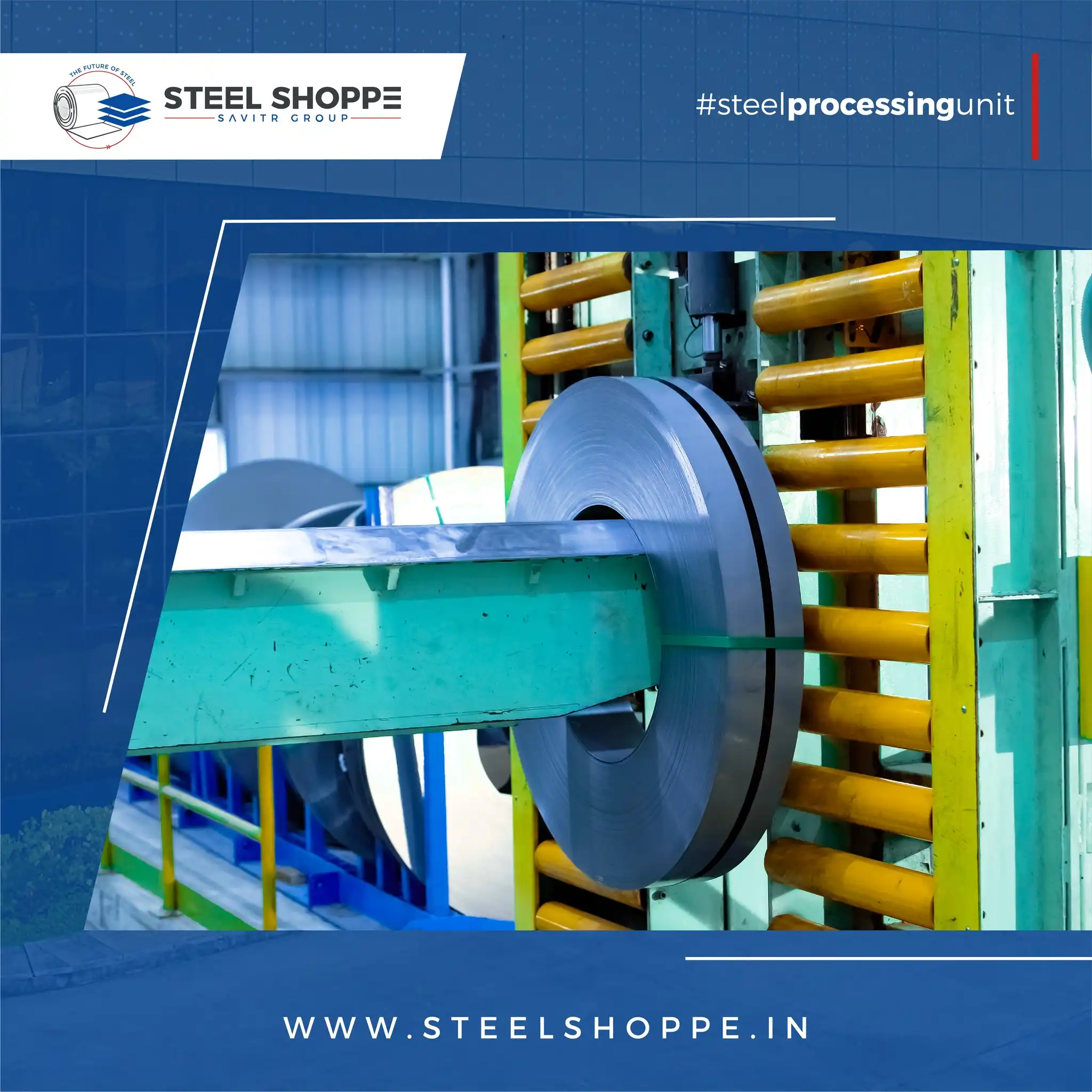What You Need to Know About Steel Coil Slitting Machines
In the world of metal manufacturing, precision and efficiency are paramount. Are you struggling with inconsistent material widths or excessive scrap? Does preparing large steel coils for downstream processes feel like a bottleneck? Understanding the core of steel coil slitting is the first step to unlocking greater throughput and higher quality in your operations.

Steel coil slitting machines are specialized industrial equipment designed to take wide master coils of steel or other metals and precisely cut them lengthwise into multiple narrower strips of specific widths. Utilizing sharp, rotating blades, these machines enable manufacturers to prepare materials with tight tolerances required for various fabricating processes like stamping, forming, and welding, significantly enhancing efficiency and reducing waste.
This critical process forms the foundation for countless manufactured goods. Dive deeper with us as we explore the essential aspects of steel coil slitting machines and why they are indispensable in modern industry.
The Fundamentals: What is Steel Coil Slitting and Why Does it Matter?
Before heavy industry can turn raw metal into cars, appliances, or structural components, wide master coils must be processed into usable dimensions. This is where steel coil slitting comes in, a high-speed cutting process that dictates the starting material’s final width and edge quality, profoundly impacting everything that follows.
Coil slitting is a precision metal cutting process where a wide master coil is fed through a machine equipped with rotary knives, slicing it into several narrower coils (mults) simultaneously. It is vital for manufacturers who require materials of specific, consistent widths and tight tolerances for downstream operations such as precision stamping, deep drawing, and hydroforming. The accuracy of the slitting process directly influences efficiency, material yield, and the final product’s quality.
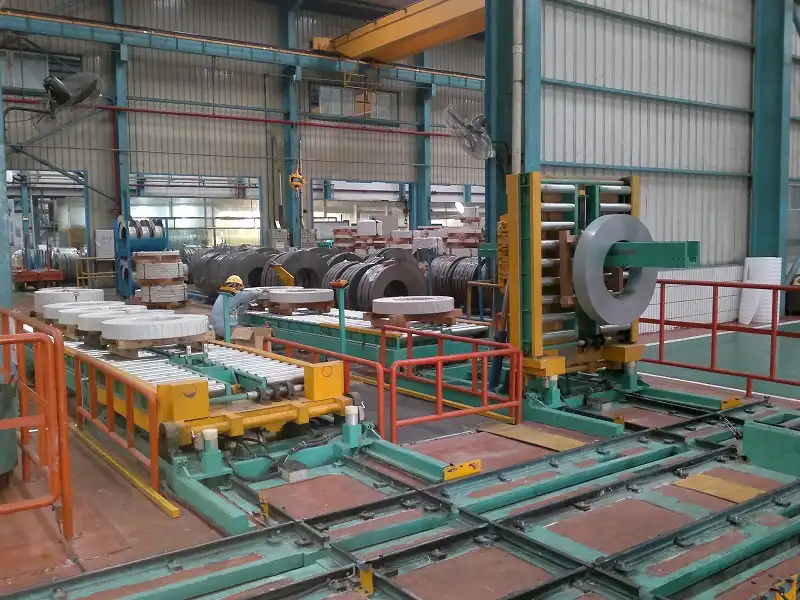
Beyond the Cut: The Importance of Precision and Efficiency
Coil slitting is far more than just dividing a wide coil into narrower strips; it’s about delivering material perfectly tailored for subsequent, often high-precision manufacturing steps. The output from a slitting line directly impacts the performance of stamping presses, roll forming machines, and other fabrication equipment. Inconsistent widths, poor edge quality, or dimensional variations can lead to significant scrap, increased downtime, and compromised product integrity.
The ‘why it matters’ lies in the cascade effect. A well-slit coil minimizes issues further down the production line. This translates directly to cost savings through reduced material waste and increased production speed. Customization is also key; slitting allows steel processors to provide materials in specialized widths that exactly match customer requirements, eliminating the need for manufacturers to perform this step themselves or deal with oversized material.
The advantages of precision slitting are clear:
- Cost Savings: High-speed slitting is significantly faster and more material-efficient than alternative cutting methods like sawing or individual sheet shearing, reducing labor, time, and tooling costs per pound.
- Customization: Delivers coils in precise, customer-specified widths, directly supporting efficient downstream processes like roll forming and precision stamping.
- Accuracy: Achieves extremely tight width tolerances and consistent edge conditions, enabling direct feeding into automated and precision manufacturing tools.
- Quality: Produces clean, smooth, burr-free edges that prevent distortion, improve material flow, and can enhance corrosion resistance compared to rough-cut edges.
This foundational process provides the necessary size and gauge flexibility, precision capabilities, and reliability improvements over other cutting methods, leading to major gains in manufacturing throughput and quality.
| Benefit | Description | Impact on Downstream Production |
|---|---|---|
| Precision | Tight width tolerances (often fractions of an inch) and consistent edges | Reduces scrap, improves part consistency, enables automation |
| Efficiency | High-speed, continuous process transforming large coils | Increases throughput, reduces labor costs, faster turnaround |
| Customization | Ability to produce multiple specific widths from a single master coil | Tailors material directly to application needs, simplifies inventory |
| Yield | Optimizes material usage by minimizing trim waste | Lowers material costs |
| Quality | Clean, burr-free edges | Improves stamping/forming die life, enhances welding, prevents damage |
Inside the Machine: Key Components of a Steel Coil Slitting Line
Understanding how a steel coil slitting machine works means looking at the essential components that collaborate to achieve precise, high-quality cuts. It’s a sophisticated system where each part plays a critical role in the overall process and the final product’s quality.
A steel coil slitting machine line typically consists of an uncoiler, the slitter head (containing rotary knives and spacers mounted on arbors), a tensioning system, and a recoiler. The uncoiler feeds the wide master coil into the slitter head, where the rotary knives cut it into multiple narrower strips. The tensioning system maintains control over the material flow, and the recoiler winds the slit strips into individual coils.
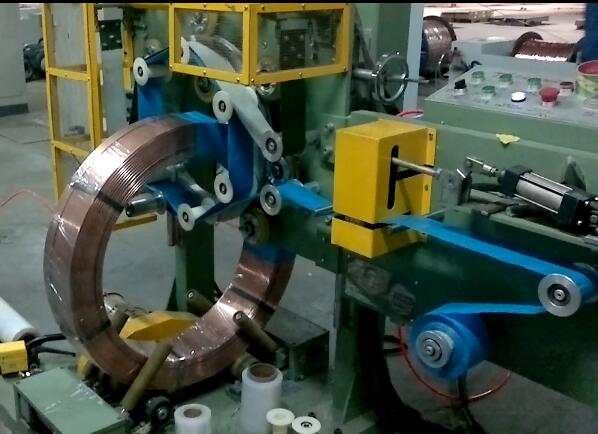
The Gears of Precision: Deconstructing the Slitting Line
The seamless interaction of several key components is what allows a slitting line to transform a heavy, wide coil into numerous precise strips. Each element must function flawlessly to maintain the desired width, edge quality, and coil integrity.
The Uncoiler (or Decoiler)
This is where the process begins. The uncoiler holds the large master coil and unwinds it, feeding the metal strip into the slitting machine at a controlled speed. Proper alignment here is crucial to ensure the material enters the slitter head correctly. Some uncoilers feature capabilities like coil loading cars to handle heavy loads and edge guides to keep the strip centered.
The Slitter Head
The heart of the machine, the slitter head houses the cutting tools.
- Knives (Slitting Blades): These are precision-ground, hardened rotary knives. Mounted on arbors, they rotate to shear the metal as it passes through. The material of the knives, their sharpness, proper alignment, and consistent maintenance are paramount for achieving clean, accurate cuts with minimal burr and distortion. Worn or misaligned blades are a primary cause of poor edge quality and dimensional inconsistencies.
- Arbors: These are the precision-machined shafts onto which the slitting knives and spacers are mounted. There is typically an upper and a lower arbor. Maintaining perfect alignment and balance of the arbors is critical; any vibration or wobble translates directly into poor edge conditions or width variations in the slit material.
- Spacers: Positioned between the knives on the arbors, spacers are precision components that determine the exact gaps between the blades, thus setting the widths of the resulting strips. Accurate spacer selection and setup are essential for achieving and maintaining tight width tolerances. Shims are used for fine adjustments.
Tensioning Systems
Located after the slitter head and before the recoiler, tensioning systems control the tension of the newly slit strips. This is vital for preventing issues like telescoping (where layers of the coil slide sideways), burrs, or edge waves. Proper tension ensures smooth, uniform winding of the individual mults onto the recoiler. Various methods exist, including felt pads, rollers, or looping pits, each designed to manage strip tension effectively.
Recoiler(s)
The final stop in the process, the recoiler(s) rewind the slit strips into individual coils. A single large recoiler might rewind all strips onto one drum with separators, or multiple smaller recoilers might be used for separate winding of each strip. A reliable recoiler maintains proper tension and alignment during winding to produce neat, tightly wound coils that are easy to handle and transport without edge damage.
Beyond these core components, systems for edge trimming (removing rough edges from the original coil), surface inspection (detecting defects), and automated controls (HMI touchscreens) further enhance the machine’s functionality and the process’s precision. While the machinery is complex and highly engineered, the skill and experience of the machine operator remain crucial for setup, monitoring, and achieving optimal results, especially when dealing with challenging materials or tight specifications.
The Slitting Process in Motion: Step-by-Step Execution
Transforming a massive master coil into usable strips involves a carefully orchestrated sequence of steps. Each stage demands precision and skilled oversight to ensure the final slit coils meet the stringent requirements of modern manufacturing.
Are you curious about the journey a steel coil takes from a wide roll to precise, usable strips? Understanding the process helps appreciate the technical expertise involved and why partnering with a capable slitting provider is crucial.
The steel coil slitting process typically involves loading the master coil onto an uncoiler, setting up and aligning the rotary knives and spacers on the slitter arbors to define the desired strip widths, feeding the coil through the slitter head for cutting, recoiling the individual slit strips into separate coils while maintaining tension, and finally, inspecting and packaging the finished mults.

From Master Coil to Mults: A Detailed Breakdown
Executing a successful slitting run requires meticulous planning, setup, and monitoring. Here is a step-by-step overview of the precision coil slitting process:
1. Master Coil Loading
The process begins with mounting the large master coil onto the uncoiler. This involves lifting the heavy coil and carefully placing it onto the uncoiler mandrel. Proper centering and securing of the coil are essential before unwinding begins.
2. Setup and Alignment
This is a critical stage performed before the coil starts feeding. Operators precisely select and arrange the slitting knives and spacers onto the upper and lower arbors based on the required slit widths and tolerances for the final product. The correct number of cuts and resulting widths are determined, and the tooling is mounted with extreme accuracy. Precise setup ensures minimal waste and consistent results throughout the run. The alignment of the arbors and knives must be checked and calibrated.
3. Slitting
Once the setup is complete and the leading edge of the coil is fed through the machine, the slitting begins. The coil passes through the slitter head, where the rotating knives shear the metal at high speeds, creating multiple narrow strips. Operators continuously monitor the process, observing the alignment, tension, and initial edge quality to make immediate adjustments if needed. Speed control is crucial for optimal cutting performance and edge quality.
4. Tension Control and Looping Pit
After the slitting head, the individual strips pass through a tensioning system. For heavier gauge materials, a looping pit is often used. The looping pit allows the strips to drop down into a pit, effectively creating a buffer that absorbs tension variations between the slitting and recoiling sections. This stress-free environment is vital for producing camber-free (not curved) slit coils and ensuring uniform tension for consistent rewinding. Lighter gauge materials might use alternative tensioning methods like friction pads or tension rolls.
5. Recoiling
The individual slit strips are then wound onto the recoiler(s). Proper tension is applied and maintained throughout this process to ensure the resulting coils are tightly wound, uniform, and free from issues like telescoping or edge damage. Separators on the recoiler drum (if winding multiple strips onto one drum) keep the individual mults distinct and prevent interleaving.
6. Inspection and Packaging
Upon completion of the run, each slit coil undergoes rigorous quality inspection. This includes checking for dimensional accuracy (width and thickness), verifying edge quality (absence of burrs, waves, or deformities), and ensuring the coil is wound correctly. Once approved, the coils are typically banded or strapped, labeled, and packaged securely to protect them from damage during storage and transport. Custom packaging requirements are often accommodated at this stage.
Following best practices, such as regular equipment calibration, meticulous blade maintenance and sharpening, precise tension control, and skilled operator involvement, helps maximize efficiency and consistently produce high-quality slit coil ready for demanding manufacturing applications.
| Process Step | Key Actions | Importance |
|---|---|---|
| Coil Loading | Mounting and securing master coil on uncoiler | Ensures smooth, centered feeding into the machine. |
| Setup & Alignment | Positioning knives/spacers on arbors; calibrating arbors | Defines final strip widths and tolerances; crucial for cut quality and accuracy. |
| Slitting | Feeding coil through rotating knives | The core cutting action; speed and alignment control impact quality. |
| Tension Control | Applying and managing tension on strips (via pit or other means) | Prevents telescoping, burrs, and edge waves; ensures consistent winding. |
| Recoiling | Winding slit strips onto recoiler(s) | Forms the final coil product; tension management is key for coil integrity. |
| Inspection & Packaging | Checking dimensions, edge quality; securing coils for transport | Final quality control; ensures product meets specifications and arrives safely. |
Applications Across Industries: Where Steel Coil Slitting Powers Production
From the cars we drive to the appliances in our homes and the energy systems powering our cities, components produced from precisely slit steel coils are ubiquitous. This fundamental metal processing step is the unsung hero behind countless manufactured goods, enabling industries to achieve the precision and scale required for their products.
Think about the complex metal parts that make up an automobile or the intricate components in a fuel cell. These often start as wide metal coils that must be cut to very specific, narrow widths with flawless edges. This critical preparation is the domain of steel coil slitting machines, making them indispensable across a diverse range of high-demand sectors.
Steel coil slitting machines are essential in numerous industries requiring precise metal strip dimensions and high-quality edges for their manufacturing processes. Key sectors include automotive (for structural components, fuel systems), aerospace (for airframe parts, heat exchangers), energy (for fuel cells, electrolyzers), appliances (for housings, internal parts), and electronics (for casings, frames). Precision slitting enables these industries to meet tight tolerances, reduce waste, and ensure the reliability and performance of their final products.
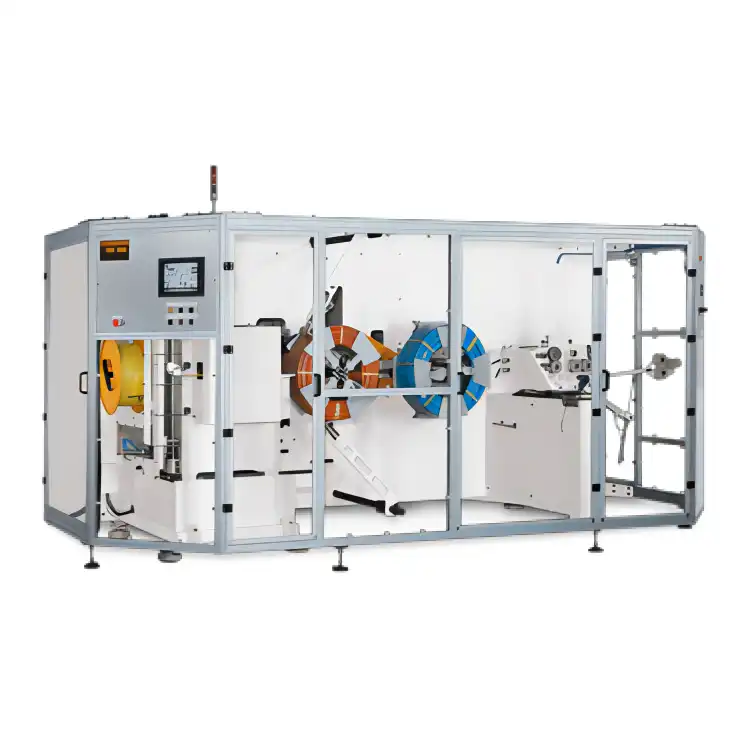
The reliance on precisely slit metal coil highlights the critical role of this processing step in modern manufacturing supply chains. Without it, achieving the necessary accuracy and efficiency for mass production of complex metal components would be significantly more challenging and costly. The versatility of slitting lines, capable of handling various metal types (steel, stainless steel, aluminum, alloys) and thicknesses, makes them adaptable to the distinct requirements of different industries. From heavy gauge steel for structural automotive parts to thin gauge stainless steel for delicate electronic casings, the slitting process provides the foundational material preparation.
Industries heavily dependent on high-quality slit coil include:
- Automotive: Precision-slit steel and stainless steel coils are fundamental for manufacturing numerous vehicle components, including structural brackets, chassis parts, exhaust systems, and fuel lines. The demand for tight tolerances and consistent edge quality is driven by safety standards, performance requirements, and the need for efficient stamping and forming processes. High-quality slit coil helps automotive manufacturers minimize scrap and streamline assembly.
- Aerospace: This sector demands exceptionally high standards for material quality and dimensional accuracy. Slit coils are used for critical aerospace components like turbine blades, heat exchangers, and parts of the airframe structure. Burr-free edges, consistent width, and flatness are non-negotiable, as they directly impact the reliability and safety of aircraft components. Traceability and stringent quality assurance from the slitting partner are paramount.
- Energy: Manufacturers of advanced energy systems like fuel cells and electrolyzers rely on slit coil with precise dimensions and smooth edges for critical applications. The integrity of these systems depends on tight seals and perfect stacking of components. Edge defects can compromise performance and lifespan, making edge quality and consistency essential.
- Appliances & HVAC: Large and small appliances, as well as heating, ventilation, and air conditioning systems, utilize significant amounts of metal components. Slit steel and aluminum coils are formed into housings, internal structures, and functional parts. Consistent material properties and dimensions delivered by precision slitting support efficient, high-volume production lines for these consumer and industrial goods.
- Electronics: Even seemingly simple metal casings, frames, and internal parts in electronic devices often start as precisely slit metal strips. As devices become smaller and more complex, the demand for extremely tight tolerances and clean cuts increases.
- Construction: Slit coils are used in various construction applications, including metal studs, roofing, siding, and HVAC ductwork. While some applications might have slightly looser tolerances than aerospace, consistency and cost-effectiveness are key drivers.
The ability to consistently deliver metal strips cut to precise specifications with the required edge quality makes steel coil slitting a foundational process that powers the production lines of these and many other industries. Choosing a slitting partner with advanced equipment and experienced operators is key to leveraging the full benefits of this technology.
Conclusion
Understanding steel coil slitting is crucial for any business relying on metal fabrication. From the intricate dance of the rotary knives on the arbors to the meticulous tension control and final recoiling, each step ensures wide master coils are transformed into the precise strips needed for downstream manufacturing. The accuracy achieved through precision slitting directly impacts material yield, production efficiency, and the quality of the final product across diverse industries like automotive, aerospace, and energy. Selecting a partner with the right expertise and equipment is vital for optimizing your material supply chain and achieving your manufacturing goals. Ensure your steel coil slitting needs are met with precision to keep your production running smoothly, from the initial coil to the final coil packing line.


